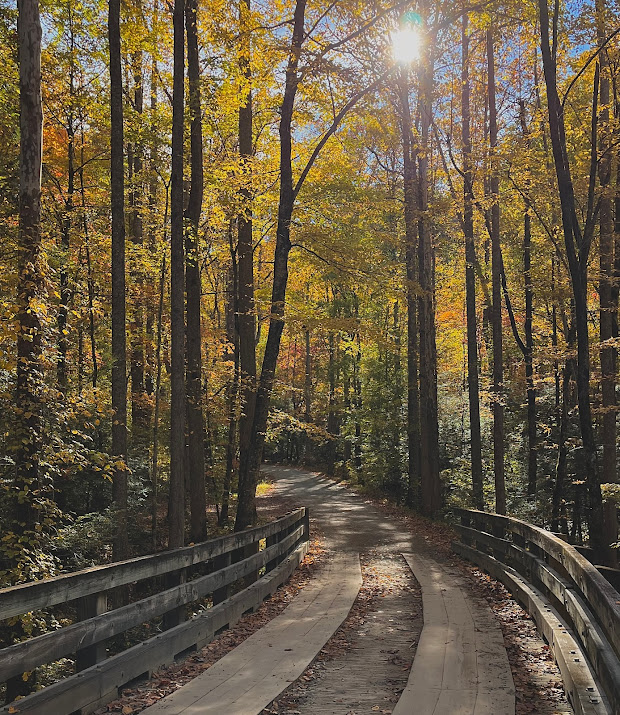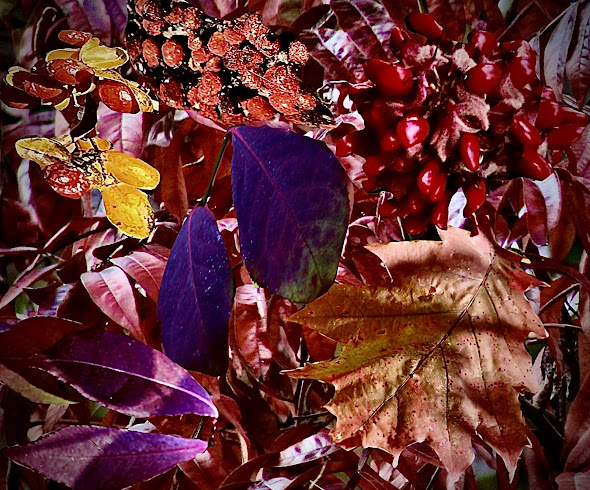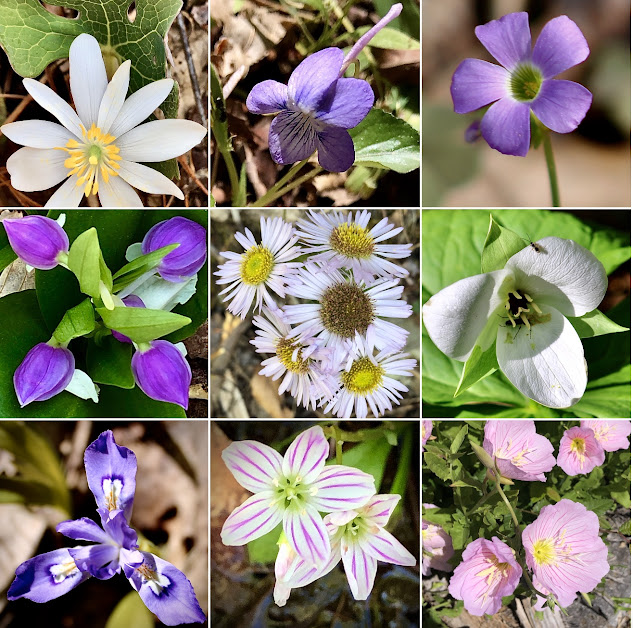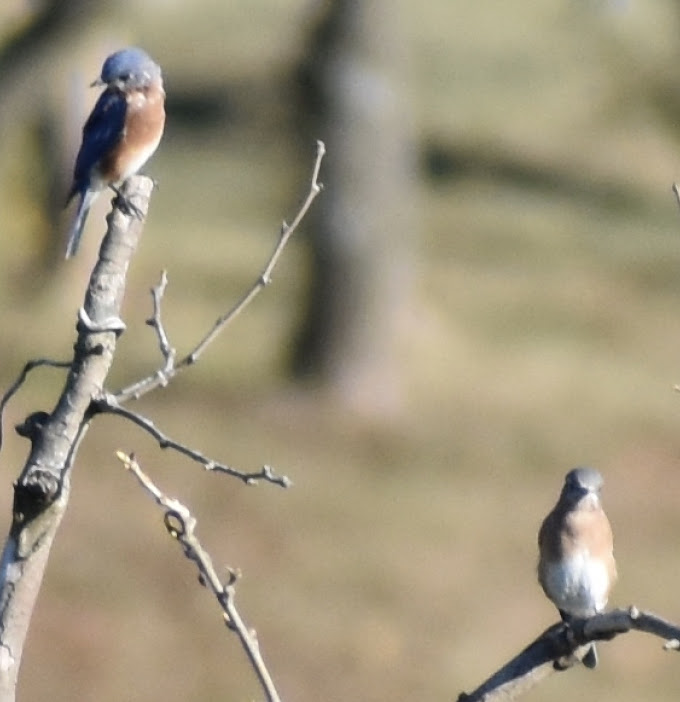Mallards Bird Cards Photography & Narratives
Mallards
One of the most photographed
Waterfowl in North America
I got this photo of this male Mallard coming in for a landing on the ground below the Greenbelt Lake Dam in Maryville Tennessee on 11/26/22 as a lady was feeding the ducks at this location. More photos from this observation below in this
Closer to Nature.....
Digital Nature Journaling Blog
A lucky photograph Randy got when he startled these three Mallards below the Greenbelt Lake dam in Pistol Creek in Maryville Tennessee on 11/14/22 at 3:29pm. The male with its dark green head and white neck ring is on the left and the brown, tan, and cream feathered female is to the right side of this photo. I was not able to get all of the second male's body who was flying just above the female in this photograph. Look closely to see his feet and lower belly.
Left click on each photo or each bird card for a better view in a gallery format. You can also scroll through them with the directional arrows. To return to the main page hit escape or click the X in the upper right hand corner of the picture.
I was maybe as startled as these 3 birds at this moment as usually I can walk up close to Mallards in this area along Pistol Creek. People often feed the waterfowl here in the park and Greenway regularly. They were peacefully swimming in the water as I approached them snapping pictures and then the above explosion of wings and flashing water occurred.
The Mallard Bird Cards and several of these photos are also posted on the side bar Bird Cards Page along with several other birds I have developed this type of formatting for.
The link to this side bar page:
I came up with idea of making bird cards (or any other living thing) from teaching High School Science and STEM classes. I had students use Google Slides with templates I designed for Portfolio projects to document their progress on projects as an assessment instead of a multiple choice test.
This type of project can be applied to many class types. I had good success in my STEM classes as a final Portfolio summary of the semester instead of a typical exam. These STEM students took pictures weekly of their work and answered questions about their progress in Google Classroom for weekly grades. The Portfolio was a summary of what they had done for the semester.
Most of the photos I chose for this Nature Journal Post are of wild Mallards. I do often see many hybrids with Domestic Mallards. The ancestors to most of the worlds domestic ducks are the wild version of the Mallard.
The next photo is a white domestic Mallard that is a subspecies of the same Genus and species of the wild Mallards (Anas platyrhynchos).
The next three photographs are single Google slides from a template I developed specifically for my bird observations. The iNaturalist program gives suggestions for the taxon identifications. This program also requires a GPS location, date, and time of the observation, similar to an old style science field paper pencil notebook without GPS.
These are just examples that can be altered or modified by teachers to use in their classes. Think of these as a digital version of the old style use of the 3 X 5 or 4 X 6 inch notecards, but having so much more information. Add in the photographs and screenshots from images like the range maps below and a more informational product.

This photograph and creative writing card of this "Lady Mallard Peeking At Me", was used in a Sidebar Page for Fall Colors and Biodiversity 2022 in this Blog.
I used to teach free verse poetry in many of my High School Science classes and as a guest instructor at University of Tennessee in Knoxville in a summer English Education Technology Poetry class.
The main focus of this writing is to have short focused lines which have a natural rhythm when you read them to yourself or they are read aloud. I often add in some rhymes and repetition of words or phrases.
Left click on each photo or each bird card for a better view in a gallery format. You can also scroll through them with the directional arrows.
Haiku is a simple way to have poetic writing for Nature photographs. I use the basic five-seven-five syllable writing for Haiku but try to have some rhythm with my words as well as enhancing the image with the short and often powerful text of the Haiku. The link to my Haiku Post that contains more on Haiku writing is:
I do love the grays or the more common different shades of tan and rich brown feathers of the females. Beauty is in the eye of the beholder. The colors of both males and females can vary within the species.
One shared trait between the sexes is the violet blue feathers on each wing that is called a "speculum" patch. This flash of color is often hidden on the females unless they are in flight. But occasionally as shown in the photos below the "speculum" is able to be viewed.
Resource for Male and Female Mallards coloration and more. All About Birds Mallards
I was on a photography exploration of the Maryville-Alcoa Tennessee Greenway from the Greenbelt lake going downstream next to Pistol Creek to the one mile post of the Alcoa section on 11/26/22.
On my way back home on the hilltop above the upper end of the lake, I went by many Mallards in the creek below the dam. I saw a lady walking down into a designated duck feeding area just up the trail above me. I saw she was carrying a bag so I got my camera ready.
I was in a lucky place and time to snap these good photos of ducks in flight to land where she was scattering corn for them to eat.
If you look closely on her right side just behind her are what looks like two larger Hybrid Mallards from wild and domestic parents.
Under construction closing post section but please view my photos and ignore my notes for my narratives I will be finishing soon.
Landing in water a pair splash but solo male has a good cool reflection
Maybe add swoop and soar and glide Creative writing or poems
Male preening daylight seems to alter head colors along with clouds
End swim off in lake




























Comments
Post a Comment